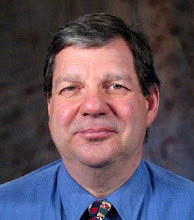








The Moscow Kremlin, or simply The Kremlin (meaning "citadel") sits on a hill overlooking the Moscow River in the heart of the Russian capital. The 68-acre complex is enclosed by a wall one-and-a-half-miles around and contains four palaces, four cathedrals and a number of other government buildings. Cathedral Square is considered the heart of the Kremlin.
The site has been continuously inhabited since the second millennium B.C. and has been a fortress since the early 14th century, when the first stone structures were erected. The existing Kremlin walls were constructed in the late 15th century and though they were partially destroyed by Napoleon as he retreated from Moscow in 1812, they remain largely intact. Some other buildings, built in Tsarist times, were destroyed by the Bolsheviks after the 1917 revolution.
The Kremlin was closed to tourists from the time of the revolution until 1955. The world-renowned Kremlin museums were opened to the public in 1961 and today long lines of visitors from the around the world visit.
Surprising to me on my first visit is how colorful the buildings are. As a child of the Cold War, I had always pictured the Kremlin as a collection of monolithic gray buildings. Quite the contrary, the dominant colors are gold and ochre.
I was also struck by how Cathedral Square dominates the landscape of the Kremlin. It never occurred to me that the predominant symbol of Soviet power and the communist threat would be watched over by a magnificent quartet of ornate cathedrals. Go figure.
The site has been continuously inhabited since the second millennium B.C. and has been a fortress since the early 14th century, when the first stone structures were erected. The existing Kremlin walls were constructed in the late 15th century and though they were partially destroyed by Napoleon as he retreated from Moscow in 1812, they remain largely intact. Some other buildings, built in Tsarist times, were destroyed by the Bolsheviks after the 1917 revolution.
The Kremlin was closed to tourists from the time of the revolution until 1955. The world-renowned Kremlin museums were opened to the public in 1961 and today long lines of visitors from the around the world visit.
Surprising to me on my first visit is how colorful the buildings are. As a child of the Cold War, I had always pictured the Kremlin as a collection of monolithic gray buildings. Quite the contrary, the dominant colors are gold and ochre.
I was also struck by how Cathedral Square dominates the landscape of the Kremlin. It never occurred to me that the predominant symbol of Soviet power and the communist threat would be watched over by a magnificent quartet of ornate cathedrals. Go figure.
Photos, top to bottom: the Kremlin Wall, which encloses the 68-acre site; the Trinity Gate (yes, THAT Trinity), the main visitors' entrance; the Cathedral of the Assumption, the largest of the four cathedrals in the Kremlin; the Cathedral of the Deposition, built in 1488; the Kremlin Senate, still the headquarters of the executive branch of the Russian government; a large bell, cast for the Ivan the Great Bell Tower, which broke during casting; a large decorative cannon; the Eternal Flame, commemmorating Russian war dead; the Stalingrad Memorial, one of 12 monuments to Russian cities that put up the fiercest resistance to, first Napoleon, and then Hitler.
Photos taken by Jerry Van Marter

No comments:
Post a Comment